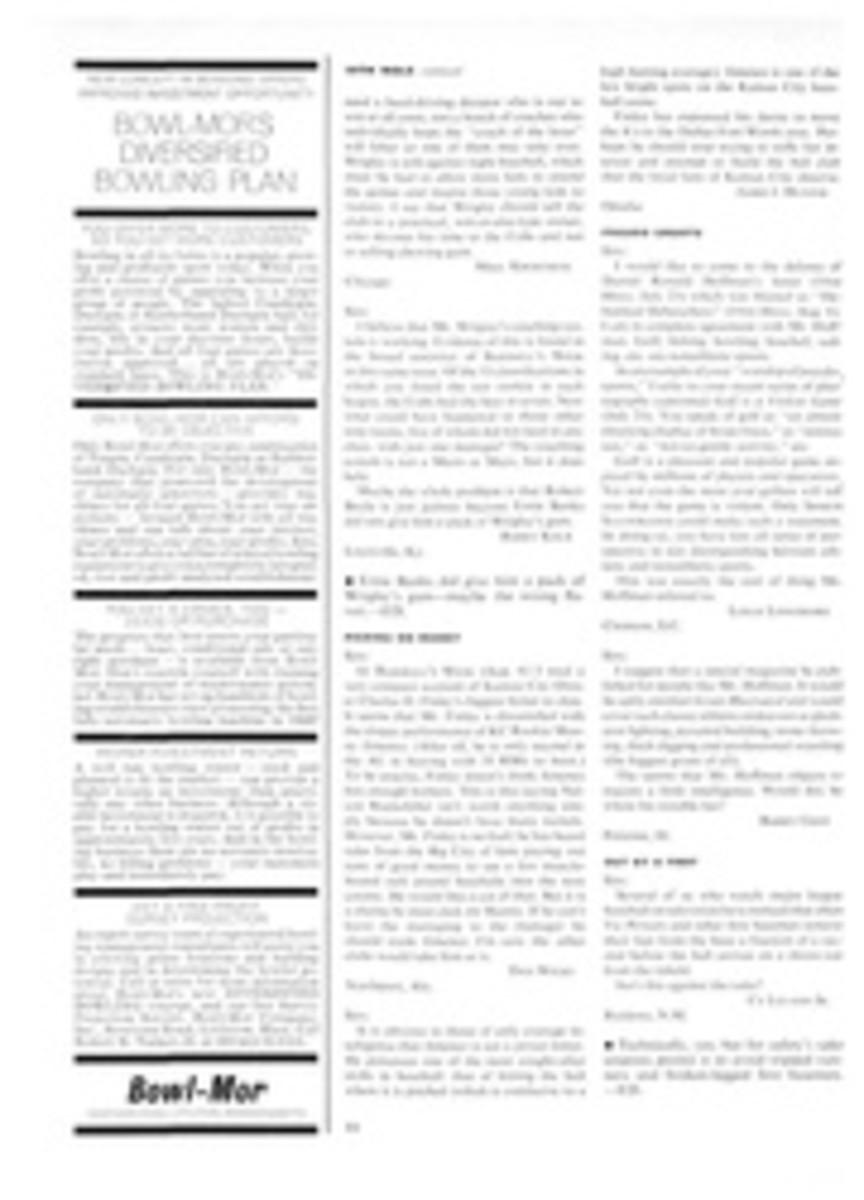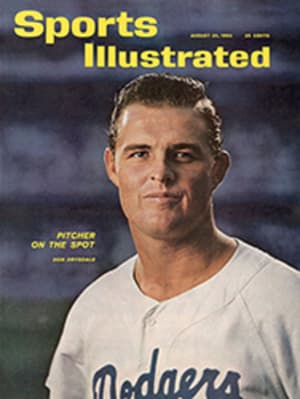
Marching Back to School
The two students at right, pictured amid the reverberating oompahs of the University of Wisconsin marching band, are wearing coats that demonstrate the strong military character of this year's clothes for college men. Both the modern civilian versions of a U.S. Navy pea jacket and a British seaman's convoy duffle are made to withstand a rigorous fall and winter on campus with the kind of efficiency the quartermaster demands of military gear. Look-alikes of these coats, made by many manufacturers and at various prices, will be found in college shops everywhere. Some enterprising students may even find real G.I. pea jackets or duffle coats stashed away and long forgotten by an older brother or a father. However, those old-grad relatives probably will themselves seek out these 1962 models, for they are among the season's most useful contributions to a comfortable Saturday afternoon in a stadium. Other aspects of the military influence on campus—olive-drab and navy-blue suits, regimental stripes and brass buttons—are shown in photographs on the following pages.
Along with the military influence, there is a renewed and very pleasant respect for spit and polish on the campus. Dirty bucks have given way to polished leather shoes—either classic Norwegian slip-ons or military bluchers. Ragged and faded jeans have been replaced by pressed gray flannel slacks or well-laundered chinos. Where a sport jacket used to pass for any occasion short of a formal dance, the three-piece suit is now a surprisingly hot item for dressed-up affairs. The blazer, with its brass buttons and military neatness, is as familiar a part of the college man's outfit as button-down shirts.
The wardrobe of the college freshman usually includes the following basic necessities: two suits, one of them flannel, one cheviot tweed; one tweed sport jacket; one blazer; one pair of flannel slacks; one pair of corduroys; two or three pairs of chinos; one pair of blue jeans; one pair of walking shorts; one tan raincoat, preferably with a removable zip lining; one stadium coat; one ski-type jacket or, in warmer areas, a golf-type jacket; one dress topcoat (probably a tweed); two sweaters (a Shetland crew and a cardigan); sweatshirts; both dress and crew socks; button-down shirts (oxford and madras are favorites); black knit, repp and foulard ties; one leather belt and an elastic sports belt; sneakers, moccasins and blucher oxfords. The tab for all of this new would add up to $600—enough for the quartermaster to clothe about four marines.
To a blare of brass, University of Wisconsin students Cal Andringa and Pete Van Lare present the season's most popular new coats for campus and stadium wear: a hooded melton-cloth pea coat and a new version of a World War II convoy duffle coat.
Military-minded college clothes for fall are dramatized by guidons in the colors of Big Ten schools. The cardigans worn by Cal Andringa and his Wisconsin classmate George Wolfe are knit in stripes taken from the Sutherland Highlanders and Royal Scots regiments. Chino pants, cinched in with a rifle-sling belt are another military legacy.
The new dress uniform on campus is the three-piece suit: 75% of all suits sold in college shops this fall will come with vests. The odds are that they will also be in standard military hues—either the olive drab that Pete Van Lare wears or the navy-blue worn by Bob Kaplan. Ties in regimental stripes complete the uniform.
A brass-buttoned blazer is probably the single most useful garment a college man can have. The new look in college blazers is the double-breasted model, worn here by Dick Fleming, who draws cheers from Sandy Styles and the rest of the red-and-white-striped Wisconsin squad.
WHERE TO BUY: Page 49: Navy-blue pea coat of 26-ounce wool melton by Mighty-Mac ($85), Abercrombie & Fitch, New York, Chicago, San Francisco. Tan duffle coat by R.F.D. of wool melton ($40), Filene's, Boston; The J. L. Hudson Co., Detroit; Meyers, Lexington, Ky. Gloves by Gates-Mills ($11). Page 50: British regimental-striped cardigans of wool knit by McGregor ($18), L. S. Ayres, Indianapolis; John Wanamaker, Philadelphia. M-1 rifle sling belt of leather by Canterbury ($6). Page 51: Linett worsted-flannel suits ($75), Boyd-Richardson, St. Louis; Dayton's, Minneapolis; De Pinna, New York; Lewis and Thos. Saltz, Washington, D.C.; John Wanamaker, Philadelphia. Oxford-cloth shirts by Gant ($6); regimental ties by Reis ($2.50). Page 52: Double-breasted blazer of navy-blue flannel by Southwick ($75), Robert Kirk, San Francisco; Paul Stuart, New York.
FOUR PHOTO ILLUSTRATIONS
JOHN G. ZIMMERMAN

